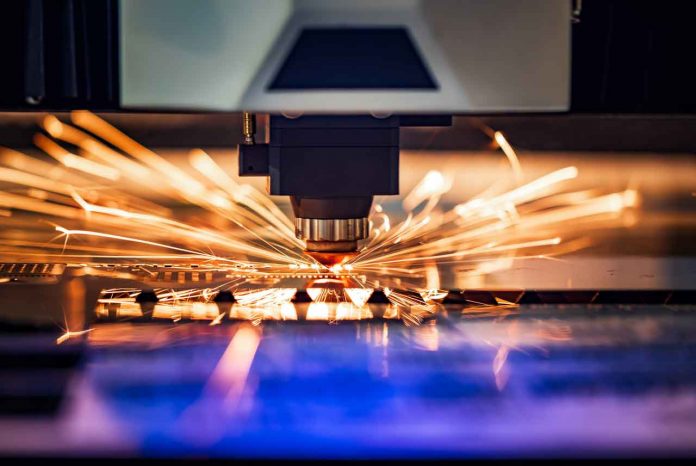As we step into the digital age, the real estate sector is evolving, too. With technology permeating every industry, laser engraving is one of the surprising players making a significant impact in real estate. How? Through the subtle art of customising property items, signage, and enhancing security features.
But what exactly is the science behind this technology? This article delves into the physics of laser engraving, illustrating the interaction between light, materials, and energy.
Light: More Than Just a Beam
At the core of laser engraving is the light. The term ‘laser’ stands for Light Amplification by Stimulated Emission of Radiation. In simple terms, a laser is a highly focused beam of light that can be controlled with incredible precision.
Unlike the random scattering of light from a lamp or the sun, lasers produce coherent light. This coherence allows the laser to focus on a tiny spot with high energy, making it possible to cut, mark or engrave materials with utmost accuracy.
Interactions With Different Materials
Laser engraving can be used on a myriad of materials, such as wood, glass, metal, and plastics. The interaction between the laser beam and the material is crucial for the engraving process.
Depending on the properties of the material—whether it is hard or soft, dense or porous—the energy from the laser is absorbed differently. For instance, softer materials like wood and plastics require lower energy, while harder materials like metals need higher energy levels.
The Engraving People, specialists in the field, have perfected the technique of adjusting laser parameters according to the material in use. It is a delicate balance: too much energy can damage the material, while too little won’t leave a visible mark. The expertise lies in knowing just how the material will respond to different levels of laser energy and adjusting the parameters accordingly.
Energy: The Driving Force
The energy of a laser is measured in watts. In engraving, the energy dictates how deep or shallow the engraving will be. For detailed and fine engravings, a lower energy setting is used, making the interaction delicate and precise.
For deeper cuts or markings, higher energy settings are employed. The speed at which the laser moves across the material also plays a critical role. Moving the laser slowly will result in deeper cuts, while a faster movement will produce shallower engravings.
The Physics Behind the Precision
The physics of laser engraving is fascinating. It is based on the principle of photothermal effect, where the laser energy is converted into heat when it strikes the material. This localised heat is intense and results in the material either vaporising or charring, which forms the engraving. The accuracy of the engraving is determined by the laser’s wavelength and focus, allowing for intricate designs and text to be reproduced with astonishing detail.
Real Estate Applications: Beyond the Surface
In the real estate sector, laser engraving is proving to be more than a tool for personalisation. It is being employed to create highly detailed property signs, custom fixtures and fittings, and even security markings on windows or structural components of a property. These engravings not only add a touch of sophistication to the property but also act as a deterrent to potential theft, as marked items are easily traceable.
The Future Is Bright
As technology continues to advance, the potential applications for laser engraving in the real estate sector are broadening. From creating unique, personalised home environments to enhancing security and contributing to the property’s aesthetic appeal, laser engraving is swiftly becoming a standard in the ever-evolving real estate industry.
In conclusion, the physics of laser engraving is a complex yet fascinating subject, marrying science and artistry in a manner that is increasingly relevant to our modern world. As The Engraving People and others in this burgeoning industry continue to innovate, we can only expect to see more intersections between this technology and the evolving landscape of real estate.







